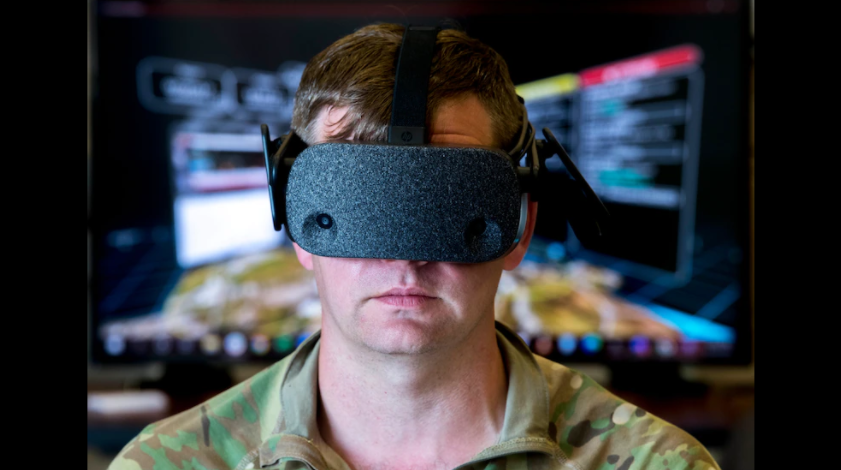
June 28, 2021 – The US Air Force’s (USAF) Air Mobility Command (AMC) has premiered a proof-of-concept for a next-generation all-domain command and control platform during its Mobility Guardian 2021 exercise, which took place in May and served as a proving ground for AMC’s first large-scale integration of an ‘Advanced Battle Management System’ (ABMS).
In light of potential training gaps caused by COVID-19 restrictions, USAF directed its Security Forces (SF) to conduct a capabilities based assessment in May of 2020. Specifically, to address a gap in weapons proficiency training, AMC SF staff gained USD $1.7 million in funding for an AFWERX Small Business Innovation Research (SBIR) contract to implement a virtual reality (VR) training system from Street Smarts VR (SSVR).
SSVR leverages VR technology to train SF Airmen on the judicious use of force in a variety of scenarios, in addition to providing courses on firing the M17 and M4 carbine weapons. An M18 course will be added in the near future, and the repertoire of VR training scenarios is ever-expanding, according to the Air Force.
The USAF added that looking ahead, AMC’s SF division will be partnering with Air Combat Command and Air Force Office of Special Investigations Headquarters to pursue a USD $1.7M Tactical Funds Increase, which would expand the VR training to include Counter Small-UAS and criminal indexing modules. USAF stated that with the proliferation of drones, VR training would prepare its SF Airmen to counter a growing threat to base security. Criminal indexing involves the arrest and documentation process – a critical skill for SF personnel that contributes information to a broader criminal database. As such, criminal indexing is key to preventing future crimes, and the USAF anticipates that the use of VR training will help to enhance this skill, which requires consistent practice.
“We have embraced the CSAF’s action orders related to Accelerate Change or Lose and have literally led the charge to get after some gaps identified … to include a training gap for SF, related to weapons proficiency training,” said Marc Huth, AMC Headquarters Integrated Defense Program Manager and Security Forces Operations action officer.
As well as VR training, the Advanced Battle Management System also utilizes VR technology, as it combines data feeds from a range of sources, including surveillance aircraft and battlefield operators on the ground. This data is relayed to “an omniscient virtual command and control center” in order to allow geographically-distributed users to communicate with each other and access remote imagery and data feeds in a shared virtual space from anywhere on the planet, according to the Air Force.
In pursuit of the US Department of Defense’s (DoD) vision of the ABMS concept, Immersive Wisdom, Inc., has developed an immersive collaborative space by incorporating VR, mixed reality (MR), augmented reality (AR), artificial intelligence (AI) and machine learning (ML). Utilizing an open digital architecture, the ABMS securely integrates multiple platforms to synchronize communication between distanced warfighters and commanders, delivering battlespace situational awareness, distributed mission planning and execution, high-fidelity 4D geospatial information, AI-driven probabilistic analysis and intel, real-time data feeds, AI early warning and threat detection and full-spectrum targeting and kinetic effects – all of which the Air Force states help to “empower commanders to make decisions at the speed of relevance.”
As a result, the ABMS concept allows decision-makers at AMC to coordinate missions in real-time via touch-screen interfaces on tablets and VR headsets, resulting in a tactical common operating picture for military commanders operating remotely.
For more information on the US Air Force’s Mobility Guardian 2021 exercise, click here.
Image credit: US Air Force
About the author
Sam is the Founder and Managing Editor of Auganix. With a background in research and report writing, he has been covering XR industry news for the past seven years.
